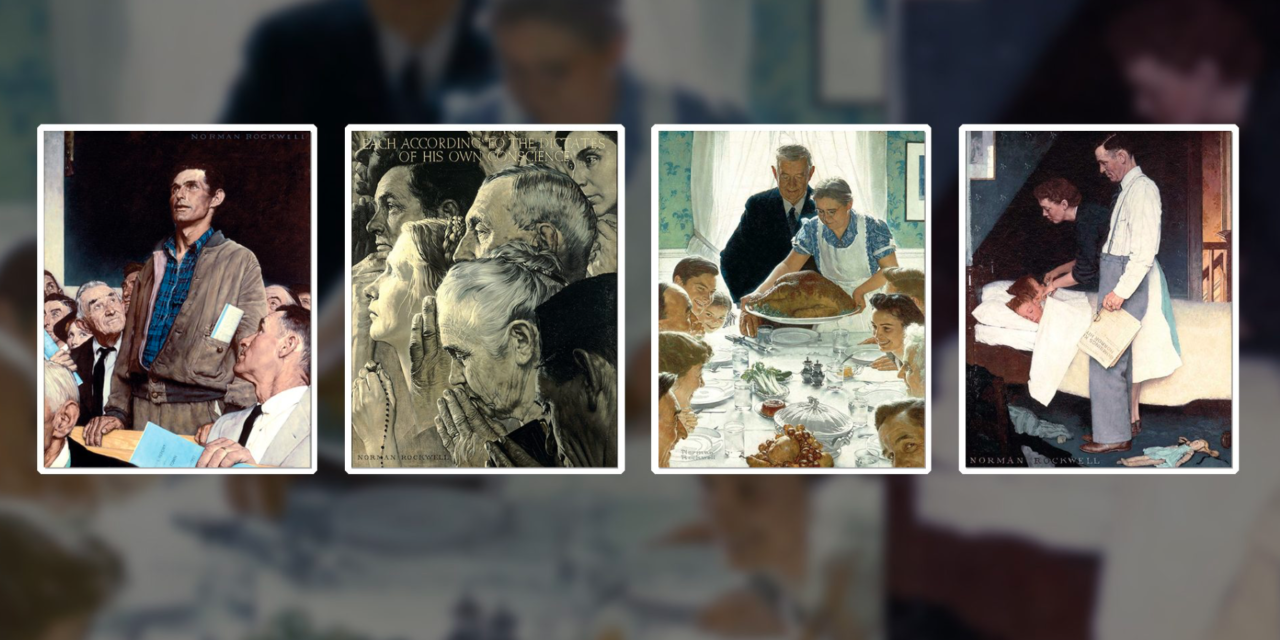It’s unlikely that President Biden’s State of the Union address last night will inspire any lasting works of art – but that’s precisely what happened 82 years ago when President Franklin Delano Roosevelt addressed a joint session of Congress and the nation.
In what’s become known as the “Four Freedoms Speech,” the president outlined why he felt it was in America’s best interest to aid Great Britain in their fight against Adolph Hitler’s Germany.
As the story goes, FDR was working on the fourth draft of the speech, which he was set to deliver on January 6, 1941. Surrounded by his close advisors Harry L. Hopkins, Samuel I. Rosenman, and Robert Sherwood in the White House study, the president began to dictate the portion of the speech that would go on to be adapted and put on canvas by Norman Rockwell.
“In the future days, which we seek to make secure, we look forward to a world founded upon four essential human freedoms,” reflected President Roosevelt.
“The first is freedom of speech and expression–everywhere in the world. The second is freedom of every person to worship God in his own way–everywhere in the world. The third is freedom from want–which, translated into world terms, means economic understandings which will secure to every nation a healthy peacetime life for its inhabitants – everywhere in the world. The fourth is freedom from fear–which, translated into world terms, means a world-wide reduction of armaments to such a point and in such a thorough fashion that no nation will be in a position to commit an act of physical aggression against any neighbor–anywhere in the world.”
The essence of the speech became even more pronounced and profound with the attack on Pearl Harbor eleven months later. Norman Rockwell, who was already painting and drawing images to help promote the war effort, was commissioned in 1942 to put the four freedoms on canvas. It took the lanky artist seven months to complete the assignment. He was so driven and determined that he was known to skip meals, resulting in a ten-pound weight loss during the project.
The four paintings were displayed in Washington and New York and then sent on a 40-city tour across the country as a way to sell war bonds.
But the majority of Americans were first introduced to the Rockwell masterpieces via the front cover of The Saturday Evening Post, a popular magazine known to commission lavish artwork, especially paintings by Rockwell. In his lifetime, the New England-based artist would paint 322 cover images for the periodical.
This year marks the 80th anniversary of the “Four Freedoms” debut, all of which were released on successive Saturdays in 1943.
“Freedom of Speech” was published on February 20th, “Freedom of Worship” on February 27th, “Freedom from Want” on March 6th and “Freedom from fear” on March 13th.
The magazine received millions of requests for reprints. Over 2.5 million sets were produced, and the allotment sold out. Postage stamps were also commissioned.
Eight decades later, we still resonate with the images because FDR articulated – and Rockwell painted – lasting principles that set our nation apart. Those four freedoms were why we were fighting then – and why so many of us continue to “fight” today. We may not be dodging bullets, but we are dealing with bullies who want to tear down and transform the founding principles of America.
Norman Rockwell is a favorite artist of many of us because he painted not necessarily what always was – but what America might nevertheless strive to be. You might show your children and grandchildren the paintings and use them as a conversation starter to talk about and pray for America.
Photo Credit: The Norman Rockwell Museum






